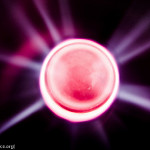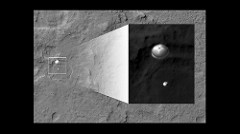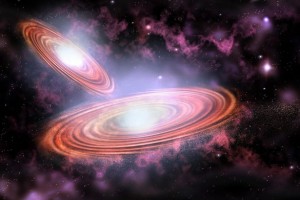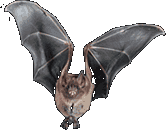NASA presents a video about the moons in our galaxy:
Author: Randy Graham
Electron Lifetime 66,000+ Yottayears
This is a bit of news that actually came out late last year, but still interesting and worth reading about.  Scientists have done research and determined that the lifetime of an electron is at least 66,000 yottayears (6.6 × 1028 yr).
Scientists have done research and determined that the lifetime of an electron is at least 66,000 yottayears (6.6 × 1028 yr).
This latest search for electron decay was made using the Borexino detector, which is designed primarily to study neutrinos. It is located deep under a mountain at the Gran Sasso National Laboratory to shield it from cosmic rays and comprises 300 tonnes of an organic liquid that is viewed by 2212 photomultipliers.
Photo by Peter Zuco 
A Tattoo or More to Fight the Common Cold?
There’s no known cure for the common cold, but receiving multiple tattoos can strengthen your immunological responses, potentially making you heartier in fighting off common infections, according to research. However, receiving a single tattoo can, at least temporarily, lower your resistance.
Mars Reconnaissance Orbiter’s 10 Year Anniversary
 Celebrating 10 years of investigating the Red Planet from above, Wired Magazine presents a slideshow of the Mars Reconnaissance Orbiter‘s best photos.
Celebrating 10 years of investigating the Red Planet from above, Wired Magazine presents a slideshow of the Mars Reconnaissance Orbiter‘s best photos.
On Gravitational Waves
I’ve been reading a bit today about this recent discovery of gravitational waves from LIGO. My hope was to get enough of an understanding of what gravitational waves are to explain them to readers here. Turns out, I can’t do a better job of explaining them nor covering the discovery than what this Science News video does, so I’ll just share it rather than try to do better:
bit today about this recent discovery of gravitational waves from LIGO. My hope was to get enough of an understanding of what gravitational waves are to explain them to readers here. Turns out, I can’t do a better job of explaining them nor covering the discovery than what this Science News video does, so I’ll just share it rather than try to do better:
I can tell you that  gravitational waves are effectively ripples in the fabric of spacetime, spreading much like ripples on the surface of a pond do when a rock is tossed into the pond. They were predicted about a century ago by Einstein as part of his Theory of Relativity, although apparently he didn’t think we’d ever have the technology to detect them. For measurable gravitational waves to even make it to earth, a massive ripple has to be started by an enormous release of energy, such as what happens during the collision of two black holes.
gravitational waves are effectively ripples in the fabric of spacetime, spreading much like ripples on the surface of a pond do when a rock is tossed into the pond. They were predicted about a century ago by Einstein as part of his Theory of Relativity, although apparently he didn’t think we’d ever have the technology to detect them. For measurable gravitational waves to even make it to earth, a massive ripple has to be started by an enormous release of energy, such as what happens during the collision of two black holes.
To find out more, read the links offered up above. And if you are interested in helping find more gravitational waves, download and install the Einstein@Home screensaver and make your own contribution to science!
Help Identify Bat Calls
Become a bat detective!  It won’t lead you to Bruce Wayne, but you’ll be helping science in classifying bat calls from around the world.
It won’t lead you to Bruce Wayne, but you’ll be helping science in classifying bat calls from around the world.
Jump right in and begin classifying calls. Take your ears on a drive through our database – and tell us what you see and hear. Listen out for bats, insects and other sounds.
UCSB ScienceLine
Just sharing this student resource that I feel offers a great benefit to those looking for answers to scientific questions.
Students ask the questions, UCSB Scientists answer them.
Marshmallows in a Vacuum
Just a fun video explaining and showing the expansion and later collapse of marshmallows when they are placed in a vacuum:
100 Foot Asteroid Flew by Earth Monday Night
In what may or may not have been a close fly-by, asteroid TX68 flew by earth somewhere between 15,000 miles and 3,000,000 miles away on Monday night. First discovered Oct. 6th, 2013, the asteroid flew by then with little data collected. This made the determination of how close the current fly-by would be rather difficult, thus the broad range of distance from Earth. Scientists hope to have a better understanding of the asteroid’s path in space by the next time it comes around.
“There is no concern whatsoever regarding this asteroid — unless you were interested in seeing it with a telescope,” Paul Chodas, manager of CNEOS, assured worried Earthlings in February.
NASA has not yet determined how close TX68 came to Earth, but Rob Landis, a program officer at NASA headquarters, said if the night sky was clear in the west and over Hawaii, NASA should be able to “nail down the orbit.”
Stem Cells in Premature Babies’ Urine
A potential new source has been found for stem cells.
Stem cells are the cellular putty from which all tissues in our body are made. They can be hard to come by though. Embryos provide a great source of stem cells that can change into a whole manner of tissues, but they involve the destruction of an embryo.
As noted in the New Scientist article, scientists have been able to find other sources of stem cells at later stages of development, but this may be a better source than any previously found.
